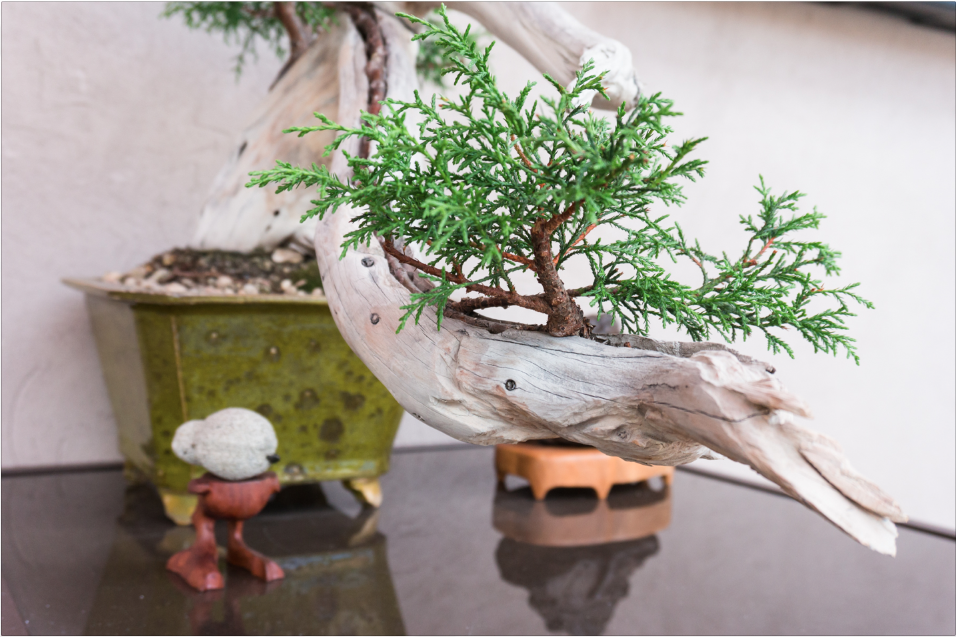Jardín errante de Antonio Díez surge a partir de la experiencia directa de expropiación de su casa por parte del Estado. Por declaratoria de “Reserva Vial”, 2 manzanas del barrio El Sosiego son demolidas. En una de estas manzanas se encontraba la propiedad del artista donde 2 generaciones de su familia han vivido. A través de entidades distritales de Bogotá D.C. [IDU, ERU] se comunicó la decisión; el IGAC se encargó posteriormente de avaluar; y TRANSMILENIO S.A. recibió el inmueble para demolerlo después de su compra por vía de la ERU.
El artista posee además de razones, emociones no negociables con respecto a su casa; en el patio vivian sus mascotas y cultivaba sus bonsai. Este espacio era el centro de la vida familiar y social en la casa; en él tenían lugar reuniones, juegos, discusiones y ocios. El afecto se extendía a los 4 durazneros que desde hace más de 30 años acompañaban a las diferentes personas que vivieron y pasaron por este hogar. De modo que, en un gesto de voluntad por conservar viva la memoria de este sitio tan significativo en su vida, decidió aplicar una técnica de reproducción vegetativa [asexual], de común uso en el cultivo de bonsai, mediante la cual logró salvar los durazneros del patio que fueron arrasados con la edificación ejecutada por el Estado.
Transformándolos en proyectos de bonsai, los durazneros viven ahora en cuencos que se guardan en lugares de tránsito. Al no contar con una casa propia, el artista asume la condición errante, y cada tanto dispone en algún espacio los árboles sobre un mesón, acomoda una mesa con sillas y un parasol; conecta una tetera y pasa un tiempo en diálogo tomando un té con las visitas de ocasión. Pues, más allá de un recuerdo melancólico, su voluntad es sostener viva la memoria de los momentos en el patio del hogar perdido, en el espíritu de los árboles que, aún sin su patio, lo acompañan.
La historia, dista de ser exclusiva; por el contrario, es común a todos los individuos y familias resisten las decisiones inconsultas del Estado. De ninguna manera el artista se atribuye autoridad para erigirse en la voz de otros, tan solo comparte imágenes que como tal crea; imágenes que se han incubado en su vida, y que son la consecuencia de ella; no una búsqueda estética que per se las justifique.
—
Errant Garden by Antonio Díez comes from the direct experience of the compulsory expropiation of his house to the state. For the declaration of the “Reserva Vial” (“Road Reservation”), two blocks of the neighbourhood El Sosiego were destroyed. In one of these blocks was the property of the artist, where two generations of his family have lived. The districs of Bogotá D.C. told him the decision. Later, the IGAC delegated the appraisal and TRANSMILENIO S. A. received the building to destroy it after its sale for building the ERU.
The artist has also his private reasons – not negociable emocions to his house: in the patio his pets were living and there he was also cultivating his bonsai. This space was the center of the family and social life in the house. In it meetings, games, discussion and free time took place. In affection to it, they planted four peach trees, more than 30 years ago, which were accompanying the different persons who lived and passed this home. So, in a gesture of conserving the memories of this so significant place in his life, he decided to apply a technique of (asexual) vegetative reproduction, comomonly used in the cultivation of bonsais, so that he menaged to save the peach trees of the patio that were destroyed by the building execute of the State.
Transforming them into bonsai projects, the peach trees are now cultivated in bowls that are kept in moving places. Without a proper home, the artist assumes the errant conditions and in every guest house he arranges the trees with a table, chairs and a sunshade. As well he has a teakettle and sometimes he drinks tea with ocasion visitants while having a chat. So, more than a melancholic keepsake, he preserve
the memory of the moments in the patio in the spirit of the trees which accompany him.
The history, distant from beeing an exclusive interview, is common to all individuals and families that resist the thoughless decision of the state. In no way the artist assumes authority to interrupt other peoples voices, only he shares the images that he creates – images that have been incubated in his life – and that are the consequence of it, not an estethic investigation that per se justifies it.
